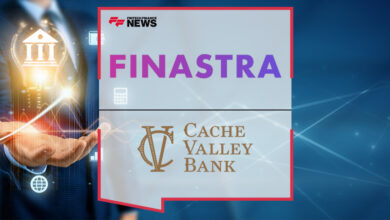Which Innovations are Driving Growth in the Digital Asset Ecosystem?

In recent years, digital currencies have been all the rave. However, the idea that digital assets are exclusively some form of currency is slowly falling by the wayside as different use cases are emerging and being rapidly adopted. This May, The Fintech Times is looking to showcase some of these new methods and explore how the digital asset ecosystem is evolving.
Kick-starting our focus this May, we first look at some of the latest innovations seen in the digital asset ecosystem during the past year.
Martin Goycoolea Scott, product lead and builder at web3 wallet Zeal, explains: “It’s been an exciting year for digital assets. We’ve seen more and more use cases across many different fields, for example, finance, social media and games. We are also seeing an increase in the tokenisation of real-world assets from fractionalised real estate (Parcl), treasury bonds (Ondo), and even airplane tickets (Flybondi).”
The digital asset space continues to explode into life, but which recent innovations are driving the most growth in the space?
AI, AI, AI
Artificial intelligence (AI) appears to have had a hand in absolutely every aspect of fintech (and beyond) throughout the last year or two. This fact is still true when it comes to digital assets, says Jeff Sekinger, CEO and founder at Nurp LLC, an algorithmic trading company.

“Artificial intelligence and machine learning are increasingly pivotal in asset management, arguably standing as some of the most transformative technologies in the field.
“As these technologies continue to develop, their potential to revolutionise how asset managers operate is immense. There’s a marked trend toward leveraging sophisticated data analytics and AI not only for enhancing risk assessment but also for refining investment strategies.
“This integration of technology boosts operational efficiencies and performance by focusing on predictive analytics and deepening insights into customer behaviours and preferences. Such advancements not only streamline processes but also provide asset managers with a competitive edge in anticipating market movements and tailoring client solutions.”
Blockchain driving growth


The past year has been all about blockchain technology according to Glendy Kam, chief product officer at Tassat Group, a blockchain-based solution provider.
“I don’t know if it would consider to be an ‘innovation’ but since last year, we have been seeing more traditional financial firms embracing the blockchain technology to tokenise traditional assets.
“The launch of many tokenised funds and other traditional investment products on public blockchain by major financial institutions is a very significant step – it paves the way to leverage the technology to optimise future transactions of these assets to improve efficiency, transparency and reduce costs and settlement times.”
DeFi and MPC
For Jacob Plaster, chief technology officer at io.finnet, a fintech focused on blockchain-based solutions for digital asset custody and instant settlement solutions, there have been two key innovations in the digital asset space.
“The biggest digital asset innovations in the past year have been twofold. On one hand, we’ve seen the explosive growth of decentralised finance (DeFi), which has led to the creation of an impressive array of complex financial instruments built on blockchain technology. However, despite their innovative potential, many DeFi platforms still struggle with issues of safety, efficiency, and user-friendliness.
“On the other hand, one of the most exciting and underutilised innovations in the space is the application of multiparty computation (MPC) technology. MPC enables multiple parties to jointly compute complex financial functions over their inputs while keeping the underlying data private. This capability unlocks new possibilities for collaboration, risk sharing, and the creation of innovative financial products and services that were previously impossible or impractical to achieve.
“I am confident that as awareness and understanding of MPC technology grows, we will see increasing interest and adoption across the digital asset landscape. This trend will be driven by the demand for more secure, privacy-preserving solutions that can address the limitations of existing technologies and pave the way for the next generation of blockchain-based financial services.”
A surge in DeFi
Nitin Agarwal, co-founder and chief revenue officer at enterprise banking provider for SMEs FV Bank, also discusses how DeFi has enjoyed growth: “Over the past years, the digital asset landscape has maintained a consistent streak of innovation. Since its inception in 2008, Bitcoin marked a watershed moment by revolutionising global money transfers through decentralisation.


“This trend persisted last year, with several noteworthy advancements. DeFi witnessed a surge, empowering users worldwide to seamlessly exchange tokenised assets. Moreover, there was a notable uptick in the utilisation of stablecoins for payments, leading to a global shift towards their adoption. The market cap of stablecoins reached new levels, underscoring their growing significance.
“Additionally, the introduction of Bitcoin ETFs represented a pivotal development. Bitcoin has progressively emerged as a prominent asset class, often likened to digital gold, offering a reliable avenue for wealth preservation.”
The future of digital assets
Finally, Michael Summer, founder of data authenticity solution ScoreDetect, explains: “Venture capital investment in the digital asset ecosystem has seen a remarkable surge, escalating by an impressive 450 per cent from 2020 to 2021, reaching a significant milestone of $33billion, now constituting five per cent of the total VC investment landscape.
“This substantial influx of capital is driving the rapid advancement of new digital asset infrastructure and cutting-edge applications, fostering innovation and growth within the sector.
“In a pivotal move, the US government has unveiled a groundbreaking comprehensive framework aimed at overseeing the responsible expansion of digital assets. This strategic framework lays out essential steps to promote innovation while proactively addressing risks to consumers, investors, and the environment. By providing clear regulatory guidance and valuable industry insights, this framework serves as a crucial foundation for the digital asset sector’s development. It not only facilitates innovation but also ensures a secure and transparent environment for all stakeholders operating within this dynamic and rapidly evolving landscape.
“This initiative is poised to have a profound impact on the future trajectory of digital assets, promoting responsible growth and safeguarding the interests of individuals and institutions engaged in this burgeoning industry. The framework sets a standard for the industry, offering a structured approach to navigate the complexities of the digital asset market, ultimately enhancing its credibility and sustainability in the global financial ecosystem.”



